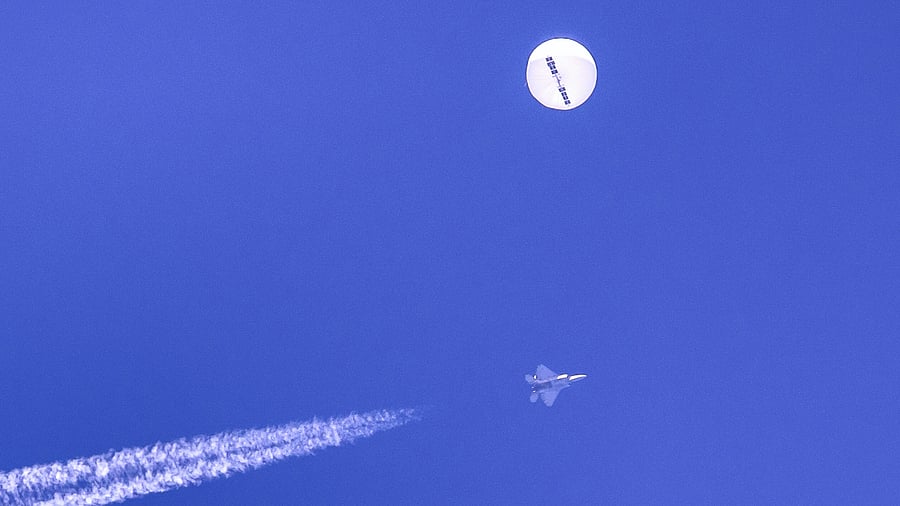
Bilateral agreements between India and China proscribe air intrusions across the Line of Actual Control (LAC). The 1996 Agreement on Confidence-Building Measures in the Military Field specifically states that flights of combat aircraft within 10 kilometres from the LAC need to be notified in advance, and that other aircraft cannot fly across the LAC except by prior permission. Yet, the Chinese have a record of violating these provisions with both regular aircraft, and other kinds of aerial surveillance devices; drones and ‘unidentified flying objects’ — balloons, perhaps — in the sky over the LAC are not new for Indian soldiers.
Given this context, it should not be surprising at all that the Chinese would violate US airspace with a surveillance balloon as was discovered earlier this month. The US has pointed out China’s balloon surveillance programme has “intruded into the airspace of over 40 countries across 5 continents”, including very likely, India, too.
The Chinese increasingly think of themselves as putative challengers to the US’ global superpower status, and believe it necessary to use any means possible to underline this challenge. Further, whether dealing with a weaker power such as India or a stronger power such as the US, and even though the provocation originates from China, it is always the Chinese that take umbrage first.
For example, following the agreement on disengagement from PP-15 in eastern Ladakh in September 2022, the Chinese foreign ministry spokesperson declared in response to questions from Indian media that the status quo as of April 2020 had been “created by India’s illegal crossing of the LAC” and asked “the Indian side to also follow relevant agreements”. Later in December, following the Yangtse incident along the LAC in Arunachal Pradesh, the Chinese once again accused Indian troops of illegally crossing the LAC, stating the “Indian side should strictly discipline and control its front-line troops.”
However, while China’s Ministry of Defense also called on the Indians to “work with the Chinese side to maintain peace and tranquility in the border areas” – “in the same direction” — as its foreign ministry put it — its military was less inclined to work in a similar manner with the US following the shooting down of the balloon. China called the US’ shooting down of the balloon, a violation of “international law”, and its defence ministry turned down a US proposal for a telephone conversation between the defence chiefs of the two countries “[i] n view of the US side’s irresponsible and seriously wrong practice, which had failed to create a proper atmosphere for dialogue and exchange between the two militaries.”
New Delhi might also learn a thing or two from the Chinese language used with the US, and use such language itself with Beijing.
Wang Yi, China’s top-ranked diplomat, for instance, urged the US, to “change course, and acknowledge and resolve the damage its abuse of force has done to China-US relations”. Chinese State media Xinhua, reported more sharper remarks from Wang’s Q&A session at the Munich Security Conference in mid-February, where he asked Washington “to show sincerity, correct its mistakes, acknowledge and repair the damage it has done.” It is difficult to recall such Indian language vis-à-vis Beijing for any of the Chinese military’s air intrusions or deployments of surveillance drones along the LAC let alone any calls for China to apologise for the LAC provocations of 2020 or at least, for Galwan, more specifically.
The Chinese tactic always has been to put the other side on the backfoot by going on the offensive in language and narrative. New Delhi, by contrast and despite the serious nature of provocations, has largely employed anodyne language in its statements to and with the Chinese — recall that there have also been several joint statements between the two militaries.
Meanwhile, why would the Chinese want to continue talks with the Indians and turn down talks with the US?
A possible explanation is that the Chinese had not expected such a robust US response. To talk now would create the impression that Beijing was seeking to tamp down tensions or worse make it look like it was being forced to offer an explanation to the US for the balloon surveillance. Either way, the optics would look bad for the Chinese.
By contrast, talking with India is both good optics and smart strategy for China.
The poor official record of information-sharing on the Indian side, allows China — as has been the case since Galwan — to diffuse blame for the provocations on the LAC. As the larger power, China also creates the impression that it is not bullying India but being reasonable by engaging in talks — talks that it has so far stretched on interminably at an excruciatingly slow pace of progress while both sitting pretty on areas it has blocked India from in eastern Ladakh and engaging in fresh provocations as at Yangtse. The Chinese have set the pace on both provocations and negotiations with New Delhi because the latter has tied itself down with a lack of transparency, and been unable to respond proactively like Washington has.
The one time India did surprise the Chinese with the Kailash range manoeuvre in August 2020, the Chinese were forced some months later into beginning the disengagement process. That should inform New Delhi — but has not — of the value of grabbing the initiative from the Chinese by robust response or provocations of its own. Whatever its approach, there is a need for clarity and credibility from the Indian government at all times both in terms of signalling to the Chinese and in communication at home.
Jabin T Jacob is Associate Professor, Department of International Relations and Governance Studies, and Director, Centre for Himalayan Studies, Shiv Nadar Institution of Eminence, Delhi-NCR.
The views expressed above are the author’s own. They do not necessarily reflect the views of DH.